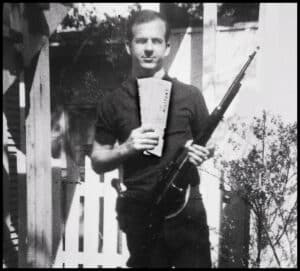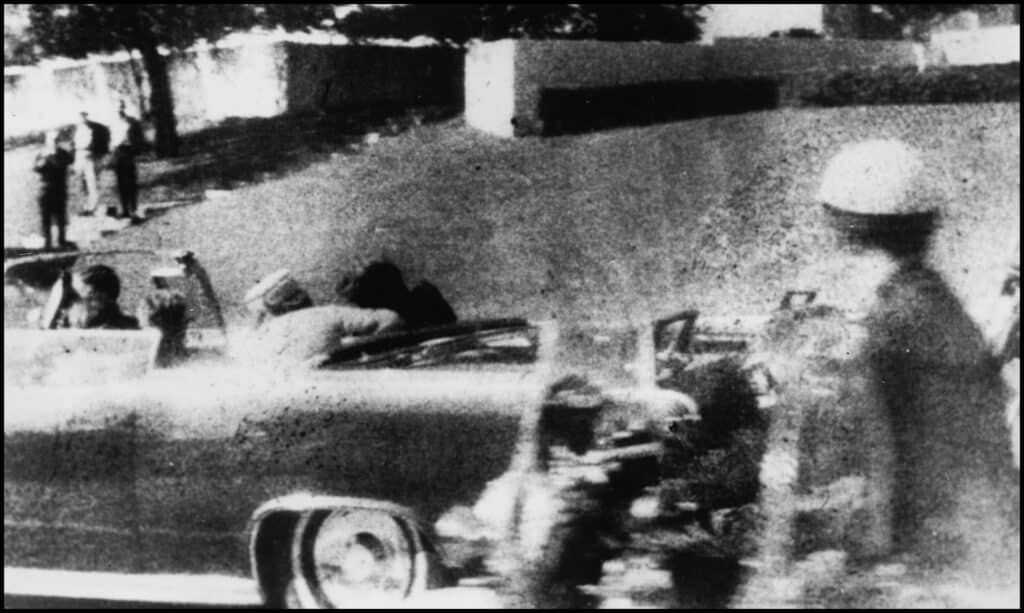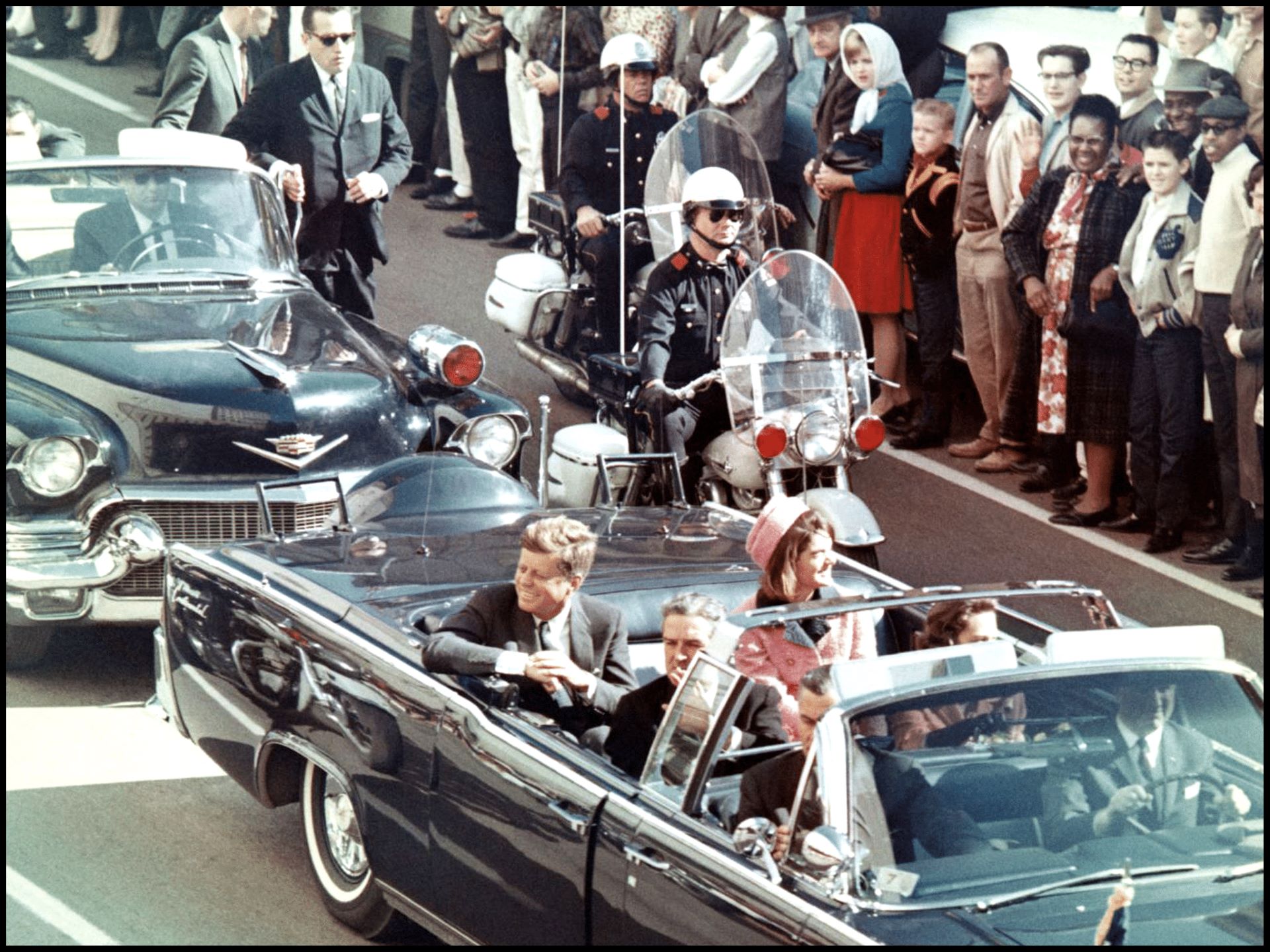Arts and Culture | Lee Harvey Oswald: Who Was He – Part 1 of 2
U.S. President John F. Kennedy’s assassination on November 22, 1963, in Dallas, Texas, sent shockwaves across the nation and the world. The [tragic event occurred during a political trip aimed at unifying the Democratic Party in Texas, adding a layer of poignancy to the devastating loss. The abrupt and violent end to the life of President Kennedy not only shook the American public to its core but also had a lasting impact on the nation’s psyche, ushering in a period of uncertainty and skepticism about the future.

The assassination of President Kennedy was a pivotal moment in American history, with the immediate aftermath characterized by a profound sense of grief and disbelief. The event not only marked the end of an era but also led to a reevaluation of the nation’s political landscape and the aspirations of its people. The sudden loss of a charismatic and visionary leader left a void that would shape the trajectory of the United States in the years to come, sparking widespread reflection on the country’s direction and the legacy of President Kennedy’s presidency. The assassination of John F. Kennedy, therefore, stands as a defining moment in American history, forever altering the nation’s outlook and triggering a period of introspection and reassessment of its future.
Lee Harvey Oswald’s early life was marked by instability, as he moved frequently and attended different schools, facing challenges and difficulties along the way. This tumultuous upbringing may have contributed to his later actions and decisions. At 17, Oswald enlisted in the U.S. Marines, serving for some time.
Following his time in the military, Oswald made a significant and controversial decision to defect to the Soviet Union in 1959. This move raised eyebrows and led to intense scrutiny of his motives and allegiances. While in the Soviet Union, Oswald married a Russian woman, Marina Nikolayevna Prusakova, adding another layer of complexity to his already enigmatic life. However, his quest for a new life in the Soviet Union was short-lived, as he returned to the U.S. after his citizenship application was denied, highlighting the complexities of his personal and political motivations.
Oswald’s decision to defect to the Soviet Union and return to the U.S. underscored his complex and enigmatic nature, sparking intrigue and speculation about his ideological beliefs and potential motives for his future actions. These early life events shed light on the intricate web of experiences and decisions that ultimately led to his involvement in the tragic assassination of President John F. Kennedy.
Lee Harvey Oswald’s activities and involvement before the JFK assassination provide insight into his potential role in the tragic event. Apart from distributing “Fair Play for Cuba” leaflets and attempting to assassinate General Edwin Walker, Oswald’s purchase of a revolver and rifle is a significant aspect of his involvement. This raises questions about his intentions and motivations leading up to the assassination.
Moreover, Oswald’s alleged firing of shots that killed President Kennedy and wounded Texas Governor John B. Connally is a pivotal part of the investigation. The forensic analysis and ballistics evidence related to the firearms attributed to Oswald shed light on the sequence of events and the extent of his culpability. These details are crucial in understanding the extent of Oswald’s involvement and the impact of his actions on that fateful day in Dallas. The linkage between Oswald’s activities and the subsequent events of the assassination underscores the complexity of the case and the various elements that investigators had to consider in their pursuit of the truth.
Following the assassination of President Kennedy, Lee Harvey Oswald was taken into custody and formally charged with the murder. However, before he could stand trial, he was fatally shot by Jack Ruby while being transferred, adding another layer of complexity to the case. This surprising turn of events led to widespread speculation and raised questions about the true nature of Oswald’s involvement in the assassination.
The Warren Commission, established to investigate the assassination, concluded that Oswald acted alone in the assassination of JFK, supporting the idea of a lone gunman scenario. Similarly, the FBI also conducted an extensive investigation and arrived at the same conclusion, affirming that Oswald was the sole perpetrator of the tragic event. However, these findings have generated significant debate and controversy over the years, with many conspiracy theories challenging the idea of Oswald acting alone. This has led to ongoing discussions about the true nature of events on that fateful day in Dallas, Texas, and the possibility of additional actors being involved in the assassination.
The involvement of Lee Harvey Oswald in the assassination of John F. Kennedy has been the subject of intense speculation and numerous conspiracy theories. One of the most persistent theories is that Oswald did not act alone in carrying out the assassination. This theory gained traction due to various inconsistencies and discrepancies in the evidence surrounding the events of that fateful day in Dallas, Texas.

For instance, eyewitness accounts of the shooting and the trajectory of the bullets have been cited as evidence that there may have been a second shooter involved. Furthermore, the timing of Oswald’s shooting of President Kennedy and the wounding of Texas Governor John B. Connally, as well as the subsequent arrest and shooting of Oswald by Jack Ruby, have raised suspicions about a potential larger conspiracy at play. The mysterious circumstances surrounding these events have fueled skepticism and led to the proliferation of conspiracy theories regarding the true nature of JFK’s assassination.
In addition to the House Select Committee on Assassinations, numerous independent investigations and research initiatives have been conducted to explore the possibility of a conspiracy. These efforts have delved into various aspects of the case, including the ballistic evidence, eyewitness testimonies, and Oswald’s background, in an attempt to uncover any potential collaborators or hidden agendas behind the assassination. Despite the official findings of the Warren Commission, the lingering doubts and unanswered questions have contributed to the enduring fascination with the conspiracy theories surrounding Lee Harvey Oswald’s role in the tragic events of November 22, 1963.
The assassination of President Kennedy had a profound and lasting impact on American society and politics. It not only shocked the nation but also brought an end to the sense of optimism about the country’s future. The immediate aftermath of the tragic event resulted in widespread grief and disbelief as people grappled with the sudden loss of a beloved leader.
Furthermore, the assassination of John F. Kennedy brought about a heightened sense of vulnerability and uncertainty among the American people. The notion that such a powerful and influential figure could be taken down in such a manner left a deep impression on the nation’s collective psyche. This sense of vulnerability and loss of optimism had a far-reaching impact on the country’s outlook, with many individuals feeling a sense of disillusionment and skepticism about the future.
Moreover, the assassination of JFK led to a significant shift in the political landscape. It sparked debates and discussions about security measures, the nature of political discourse, and the government’s role in ensuring its leaders’ safety.
The event prompted a reevaluation of the nation’s political processes and raised questions about the potential risks associated with public service and leadership roles. As a result, the assassination of President Kennedy left an indelible mark on the American political landscape, influencing the way the nation approached governance and leadership for years to come.

